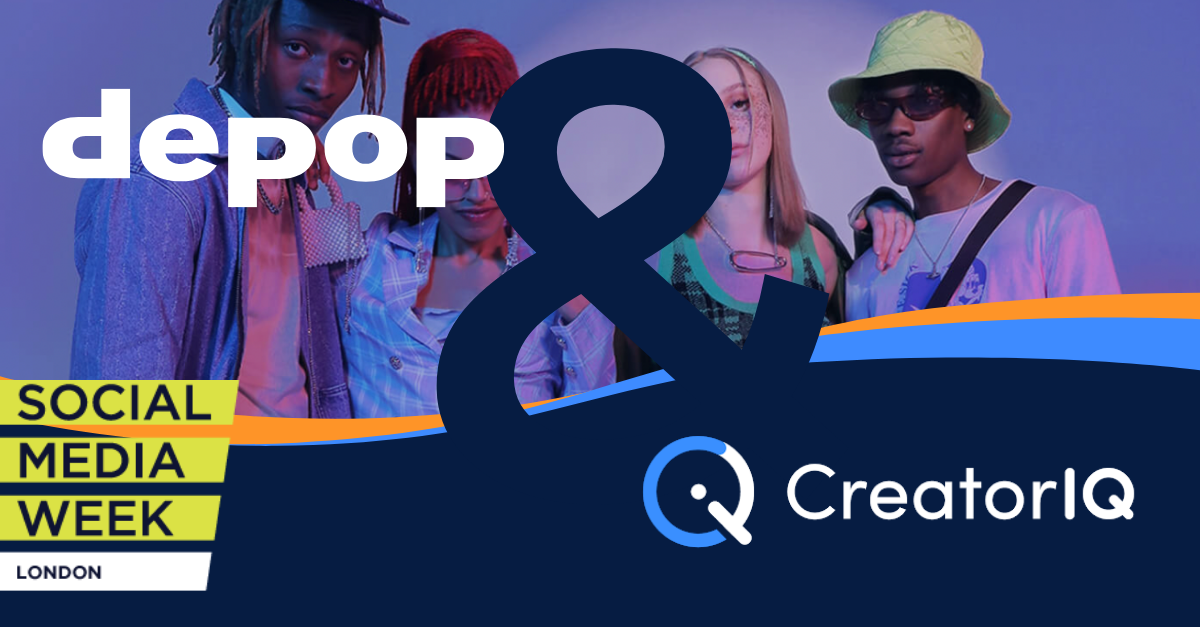Influencer marketing as a strategy continues to mature. Today, brands and businesses are turning to creators not just for top-of-funnel awareness, but also mid- and bottom-of-funnel results.
To be successful at influencer marketing today, brands need to monitor and measure their influencer marketing activity at all levels and at every touchpoint—from top line brand awareness, to brand lift and purchase intent, to actual sales.
There is an increasing understanding that companies need a firmer grasp on tracking conversions across the funnel, which is why AdWeek asked our COO Tim Sovay to outline the best practices for measuring ROI at the recent Social Media Week—London event.
In this “fireside chat” discussion with Olivia Walker, Head of Marketing, UK at Depop, the marketers discussed how brands can incorporate data and measurement into their influencer marketing strategies, the key components needed to measure impact at different stages of the funnel, and the influencer marketing trends to prepare for in the year ahead.
Here were the main takeaways from the conversation:
Takeaway #1: The Creator Economy will continue to reach its potential as advancements in data and measurement support the maturity and scalability of brand programs
Creating more impactful influencer campaigns means getting smarter about data and measurement. Advancements like machine learning-powered searches or lookalike audience profiling require a data-driven approach. So, reporting and measurement must deliver more precise attribution and insights as it travels down the funnel to enable the predictive modeling essential to scaling programs more efficiently.
“The only way this industry as a whole is going to reach its potential is through advancements in data and measurement,” said Tim. “[Brands] need to better understand how influencer marketing compares, apples-to-apples, to other more mature advertising channels. The more measurement we have - the more full-funnel understanding we have - the more potential the Creator Economy as a whole has.”
“Influencers, as a community, have built Depop into what it is today,” said Olivia. “We see all of our community as an engine for driving growth for our business. Nearly 40% of new users claim they heard about Depop through an influencer. So they are super critical for us on our growth journey to date, and into our future.”
Takeaway #2: Influencer marketing is now a leading channel for all areas of the customer funnel
To capitalize on influencer marketing, businesses should segment creators based on their strengths throughout the funnel. Some will perform best with top-of-funnel awareness goals due to their massive following and high-quality content. Others will deliver mid-funnel benefits through paid media and content optimization initiatives. And, still, others will bring bottom-of-funnel strength with affiliate sales and customer conversion rates.
“If you set your business outcome goals upfront, this channel can drive everything from brand lift to purchase intent, and conversion to sales,” Tim said. “Every company globally now is thinking like an e-commerce or social commerce company, big and small. The measurements might change with big vs small, but really understanding that customer funnel is critical.”
“Back in the day, it was more organic and more focused on outreach and engagement metrics,” said Olivia. “Over time our data and ability to track/connect influencer and creator through the activity in the app become very focused on the bottom of the funnel, focusing on cost per sign-ups and cost per registrations.”
Takeaway #3: Continue to test the combination of creators, technologies, and business goals to develop the optimal mix for your brand—no two brand communities are identical
Put simply… Test, test, test!
Step one, however, is to clearly outline what you’re testing for.
“It’s critical to define your business outcomes at the start of a given campaign,” said Tim. “Set those metrics upfront, and agree on those metrics as an organization. With the fundamentals in place, it’s much easier to understand what the performance or outcomes are for a given creator or cohort of creator partners.”
“What’s interesting about influencers is that they’re really multifaceted,” said Olivia. “They’ll drive awareness as well as driving sign-ups. Sometimes it takes us by surprise, but then we quickly learn and look to reapply that. So, we’ll keep investing and look at the full-funnel and segmenting investment against that so we protect it against the different metrics.”
For more detail on all the above, and more, stream the full discussion video below:
https://player.vimeo.com/video/646150300?h=80ec46fb02&badge=0&autopause=0&player_id=0&app_id=58479
